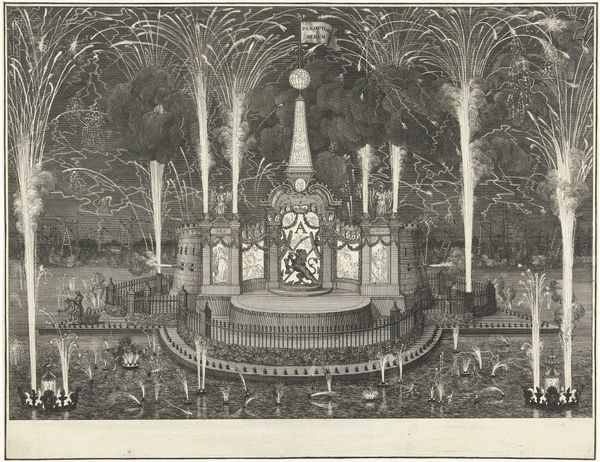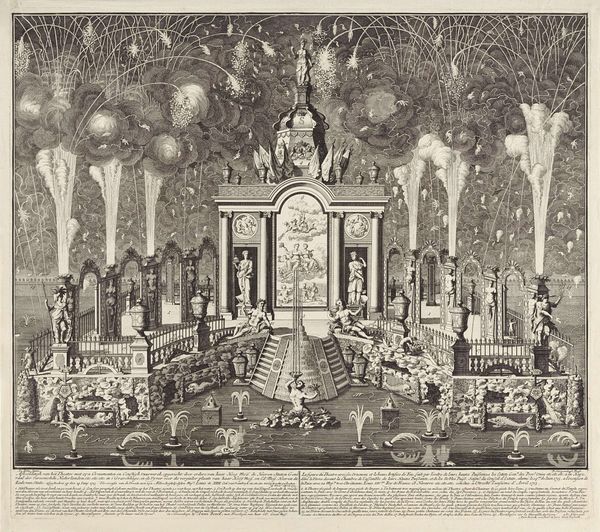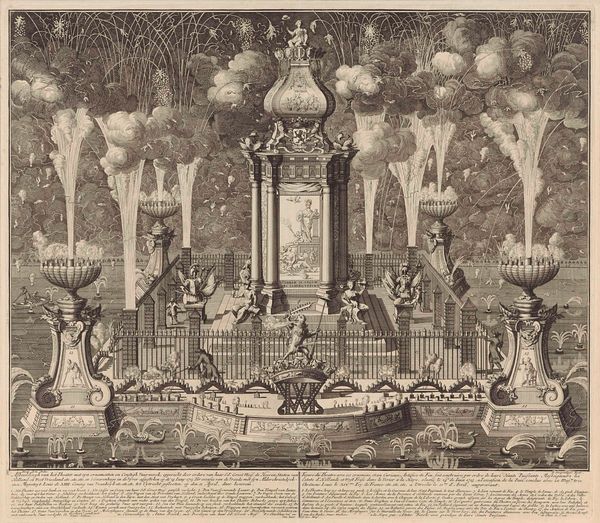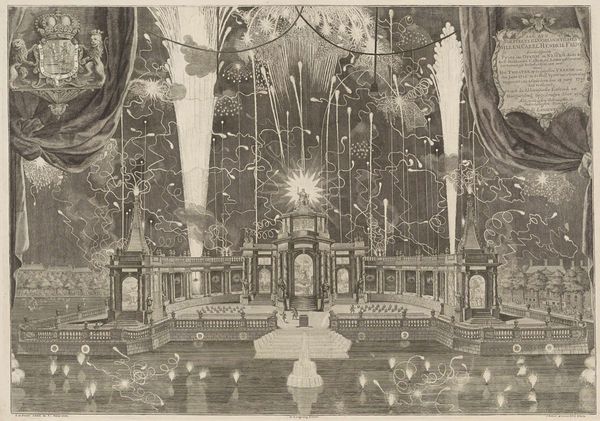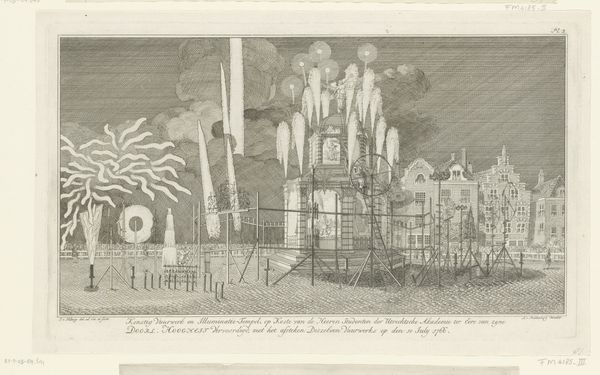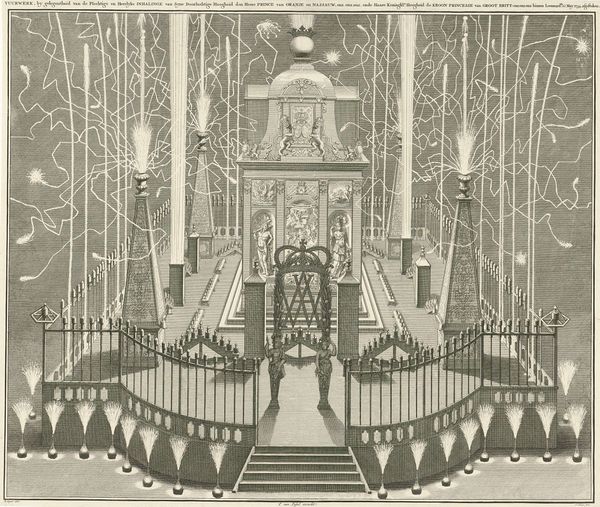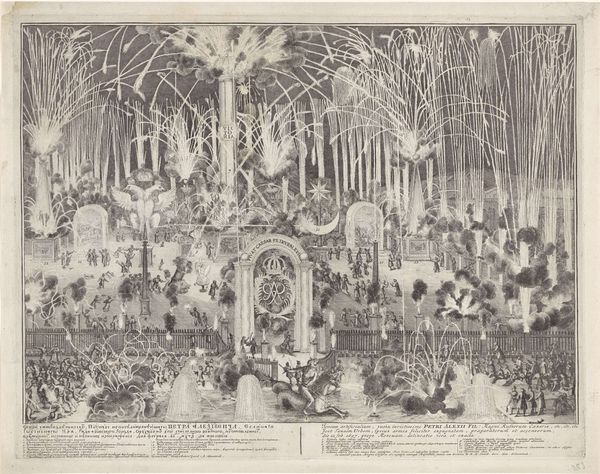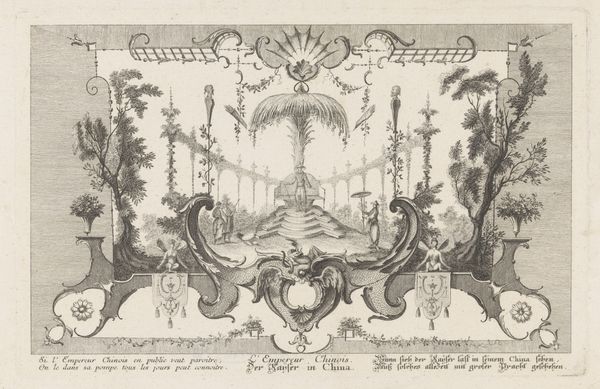
print, engraving
#
baroque
# print
#
pen illustration
#
old engraving style
#
landscape
#
line
#
history-painting
#
engraving
Dimensions: height 305 mm, width 371 mm
Copyright: Rijks Museum: Open Domain
Editor: Here we have "Fireworks at the Arrival of Willem IV in Breda, 1737," a print from 1737. It looks like an engraving. All that firework display makes it seem like a celebration of power. How do you interpret this work within its historical context? Curator: This piece isn’t just documenting fireworks; it’s carefully constructing an image of power at a crucial historical moment. Consider Willem IV's position then. How do these fireworks operate as a symbolic act, reaffirming his legitimacy and solidifying his image? The visual language – the bright, explosive displays against the architecture – subtly suggests absolute authority. Editor: I see that now! It is interesting to view this from the perspective of propaganda and its impact on cultural identity and collective memory. The fireworks aren't merely pretty; they represent something much deeper. Curator: Precisely. How does this relate to contemporary understandings of power and spectacle, particularly within social justice movements or even political protests where visuals are curated? Editor: It feels connected to our modern engagement with art as activism, but with reversed intentions: while modern activism employs such displays to disrupt power, this 18th-century engraving clearly uses spectacle to bolster the establishment. I wonder, did everyone see it that way back then? Curator: An essential question. Critical engagement with art requires asking such questions – whose narrative is being told and whose is being suppressed? Considering such perspectives deepens our insight, even on seemingly celebratory images. Editor: Thanks, seeing this print through the lens of political power and visual rhetoric really opens it up to new meanings. Curator: Absolutely, this is just one way to examine and understand visual culture through sociopolitical landscapes.
Comments
No comments
Be the first to comment and join the conversation on the ultimate creative platform.
